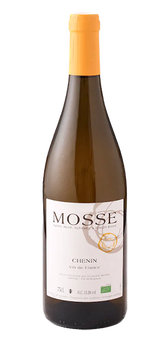Agnes et Rene Mosse Chenin 2022 (750ML)
Other Details
Critic Scores, Reviews & Descriptions
This wine is produced within the Anjou appellation but is intentionally declassified as VDF. From four parcels planted in 2000. Fruity attack, a crunchy wine.
Agnès and René Mosse, along with their sons Joseph and Sylvestre, live and work in the village of St-Lambert-du-Lattay, a village in the Coteaux-du-Layon area of Anjou. Layon is a small tributary to the Loire that lazily digs its way through well exposed and drained hills of schist and sandstone. Its micro-climate allows for a long hang-time, and when the mornings are foggy in the fall, with no rain, botrytis develops easily on the Chenin grapes.
Before becoming vignerons, the Mosse had owned a wine-bar/retail shop hybrid in Tours. They credit the great vignerons they met there, among them Jo Pithon and François Chidaine, as the impetus to become winemakers. The couple studied viticulture and oenology at the agricultural lycée in Amboise where two of their teachers were Thierry Puzelat (Clos du Tue-Boeuf) and Christian Chaussard (Domaine le Briseau).
After graduating, the Mosse spent two years working in Côte-de Beaune before buying their estate in St-Lambert in 1999. They currently work 17 hectares of vines, most of them planted with Chenin Blanc (9HA), and Cabernet Franc(3 HA), the rest planted with Gamay, Chardonnay, Grolleau Gris and Noir.
They adopted organic viticulture techniques from the start, plowing between and under the rows, and use biodynamic preparations to treat the vines and soil. In their area of "Anjou Noir" (Black Anjou, so called because of the dark color of the soils of slate and volcanic rocks), the soils are shallow, with subsoils of schist and sandstone, and varying amounts of clay on the surface.
With all the efforts put into vineyard work, it is equally important to them to vinify in a natural fashion, and they are particularly attentive to minimizing manipulations and the use of sulfur. All the wines are barrel-fermented and aged. The whites usually go through their malolactic fermentation. The barrels are renewed as needed, but are always older as to not impart oak flavors.
 Loading... Please wait...
Loading... Please wait...






